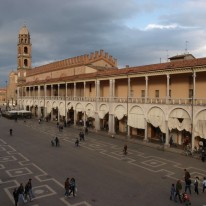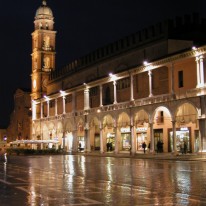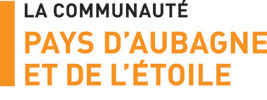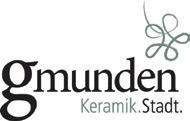Faenza
Short history and city profile
Faenza is a unique city in the world, rich in monuments and works of art, but above all it's famous for having developed a ceramic art at the highest levels, since the first centuries after 1000 AD. This art has given such a prestige to the city that the word Faenza ("Faïence"), in the World, has also become the term that indicates in general the ability to transform the raw clay, with the gloss of the glazes and the vivid colour palette, that potters have developed and improved up to date.
Faenza came at the peak of its artistic and technical fame already in the 16th Century, with the elegant ceramic pieces called "Bianchi di Faenza" ("Whites of Faenza"), objects that excelled in art and technique and that influenced potters not only in Italy but also internationally. Since then Faenza has become, all over the Western World, the City of Ceramic par excellence insomuch as its name in the French translation "Faïence" indicates Ceramic Art tout court. Such a significant history is witnessed in Faenza by one of the most comprehensive museums in the World dedicated to this art, the International Museum of Ceramics.
Faenza is a wonderful city of art. Around the year 1000 AD and then in the period of Medieval Communes, the city lived a long season of building expansion and wealth, reaching a peak during the rule of the Manfredi Family (1313-1501). In the 15th Century, under the rule of Carlo II Manfredi, the urban renewal plan of the city was completed; in particular, the two beautiful squares – Piazza della Libertà and Piazza del Popolo – were transformed, the building of the magnificent Cathedral (1474-1515) was appointed to the Tuscan architect Giuliano da Maiano, many works of art were acquired to embellish churches and palaces, some of which are now visible in the Municipal Art Gallery (Pinacoteca Comunale) and in the Diocesan Museum.
Other art collections of great interest can be admired at Carlo Zauli Museum, at Guerrino Tramonti Museum and Riccardo Gatti Museum.
Faenza lived, between the 18th and early 19th century, a new period of splendour at the European level: in fact, along the streets of the city, there are many signs of the Neoclassical Period. The masterpieces, representative of the high artistic level achieved in Faenza in the field of architecture and decorative art during the Neoclassical Period, are Milzetti Palace (today the Museum of Neoclassical Age in Romagna), started by architect Giuseppe Pistocchi in 1792 and completed by architect Giovanni Antonio Antolini at the beginning of the following century, and the Teatro Comunale "Masini" (city theatre), built by Pistocchi between 1780 and 1787, considered one of the most beautiful theatres in Italy.
Faenza hosts today several important events, such as Argillà Italia, the biennial ceramic festival held in early September, and the International Competition of Contemporary Ceramic Art "Premio Faenza", with the exhibition of selected and winner pieces every two years, in June: both events draw to Faenza artists, collectors and ceramic amateurs from all over the World. The "Palio del Niballo", a spectacular tournament between five horsemen representative of the five districts of the town, recalls every year in June the magnificence and the struggles of Faenza under the rule of the Manfredi Family; the "Palio" then closes officially on the eve of the Epiphany (January 5th) with the "Nott de Bisò", when the bonfire of Niballo (a straw puppet) is lit by the representatives of the district winner of the last tournament.
Finally, the Cento Chilometri del Passatore (a 100 Km run from Florence to Faenza) is a fascinating foot race that takes place in the last weekend of May, with the participation of athletes of all nationalities.
For the lovers of good food and drink, Faenza offers warm restaurants both in the historic town centre and the in green hills surrounding the city. Some of the typical dishes of Faenza are tagliatelle, cappelletti, orecchioni, lasagne, strozzapreti: all homemade pasta dishes, usually topped with ragù, the rich meat sauce typical of Romagna. The typical local wines are Albana di Romagna (white) and Sangiovese di Romagna (red).






